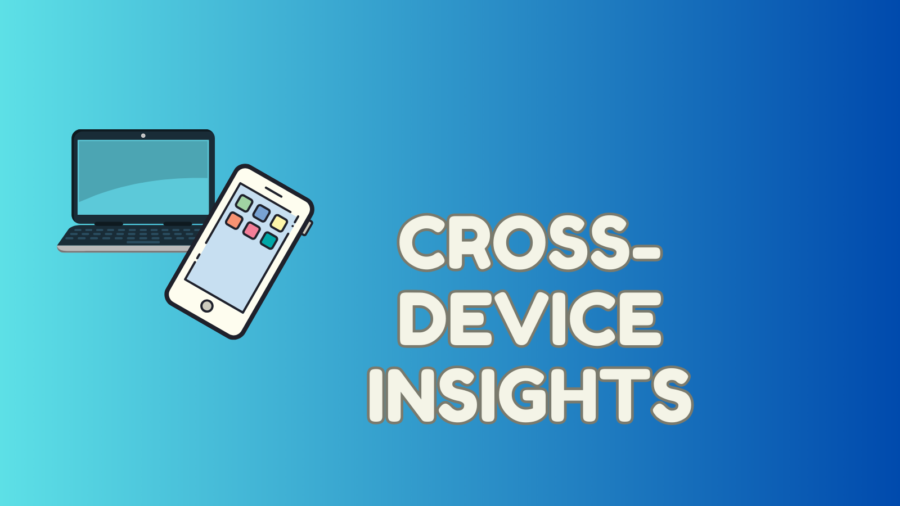Where users seamlessly transition between an array of devices, understanding their behavior has become an intricate puzzle. This puzzle is now being elegantly solved through the application of cross-platform product analytics – an approach that provides a multidimensional view of user interactions spanning devices. In this article, we’ll delve deeper into the significance of cross-platform analytics, explore its tangible benefits, and showcase how it revolutionizes how businesses comprehend and optimize user experiences.
The Evolution of User Behavior
The paradigm of user behavior has evolved dramatically. Gone are the days when users interacted solely with their desktop computers. Nowadays, users might start their morning scrolling through a mobile app, transition to a laptop for work, continue on a tablet during lunch, and perhaps wrap up the day watching content on their smart TV. Such fluidity demands an analytical approach that transcends device-specific tracking, and this is precisely where cross-platform product analytics shines.
The Significance of Cross-Platform Analytics
Traditional analytics, while invaluable, often provide a fragmented view of user interactions limited to individual devices. This narrow perspective fails to capture the entire user journey, resulting in incomplete insights and potentially misguided optimization efforts. Enter cross-platform product analytics – a solution that bridges these gaps, offering a panoramic understanding of user engagement. It unravels the complexity of cross-device journeys, allowing businesses to identify patterns, transitions, and preferences that were previously obscured.
Benefits of Cross-Platform Analytics
- Comprehensive Insights: Cross-platform analytics offers a panoramic view of user behavior. It connects the dots between devices, revealing the intricate pathways users traverse. This comprehensive perspective enables businesses to refine their strategies holistically.
- Contextual Understanding: A user’s journey often spans multiple devices. Cross-platform analytics provides a contextual understanding of these journeys, allowing businesses to pick up the thread seamlessly. Imagine a user who starts exploring a product on their smartphone during the commute and then switches to a laptop at home – cross-platform analytics ensures a seamless experience between these transitions.
- Path Optimization: Analyzing cross-platform data provides the insights needed to optimize user paths. Businesses can identify common drop-off points during device shifts and tailor interventions to smoothen these transitions. For instance, a retail app could identify a point where users frequently abandon their shopping cart when transitioning from mobile to desktop – armed with this data, they can implement strategies to retain these users during the shift.
- Personalization: Cross-platform insights can offer a deeper understanding of user preferences associated with specific devices. For example, a streaming service might notice that users tend to watch longer-form content on their smart TVs, while they prefer shorter clips on their smartphones. Armed with this knowledge, the service can curate recommendations that align with these preferences, enhancing engagement.
- Conversion Attribution: The modern conversion funnel often spans multiple devices. Cross-platform analytics aids in attributing conversions accurately across the entire journey. Consider a scenario where a user discovers a product on their tablet, researches it on their laptop, and finally makes the purchase via their smartphone – cross-platform analytics ensures that each device’s role in the conversion is duly recognized.
Implementing Cross-Platform Analytics
- Unified Tracking: Consistency in data collection is paramount. Employ a unified tracking system that functions seamlessly across devices. This ensures that data is collected uniformly, facilitating accurate cross-device comparison.
- User Identification: Implement robust methods for user identification across devices. This could involve user accounts, login credentials, or device identifiers. These identifiers enable the linkage of user behavior across different devices, forming a cohesive narrative.
- Data Integration: For a comprehensive understanding, integrate cross-platform data with other business systems. Combining cross-platform analytics with data from customer relationship management (CRM) tools or marketing automation systems can enrich insights and drive informed decision-making.
- Behavior Mapping: Analyze cross-platform data to map user behavior across devices. Identify patterns, common touchpoints, and potential pain points during device transitions. This mapping provides a granular understanding of user engagement that informs optimization strategies.
- UX Adaptation: Armed with cross-platform insights, businesses can create user experiences that adapt fluidly to device shifts. Whether it’s responsive design, tailored content delivery, or synchronized user journeys, these adaptations ensure that the user experience remains consistent and frictionless.
Future of User-Centric Analytics
Cross-platform product analytics is more than just a tracking mechanism; it’s a lens through which businesses gain a profound understanding of user behavior. By embracing this approach, companies position themselves to provide seamless, tailored experiences that transcend devices. The knowledge gleaned from cross-platform analytics allows businesses to create an ecosystem where user satisfaction is intricately woven into every interaction. It’s not just about tracking user transitions; it’s about crafting an interconnected narrative of user engagement that spans devices, fuels loyalty, and propels growth. In an era defined by device diversity, cross-platform analytics emerges as the cornerstone of a user-centric strategy that redefines digital success.


